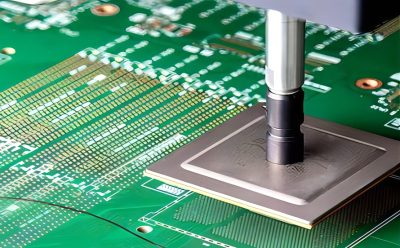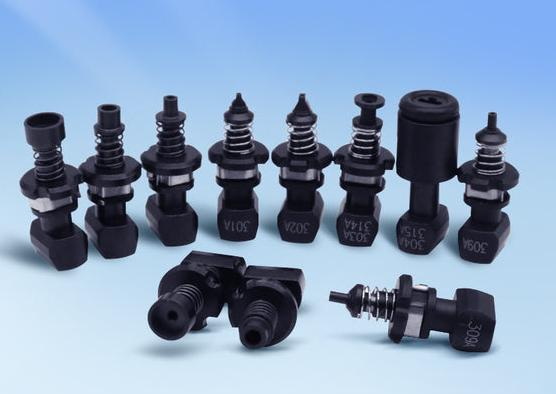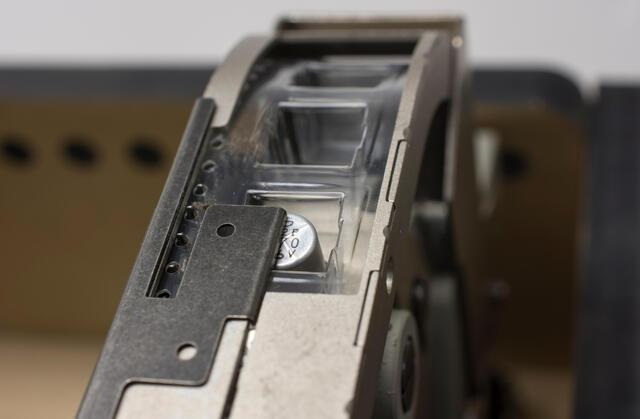Content Menu
● Introduction to SMT Line PCB Conveyors
● Importance of Maintenance for SMT Line PCB Conveyors
● Key Maintenance Practices for SMT Line PCB Conveyors
>> 1. Daily Cleaning
>> 2. Regular Inspection
>> 3. Lubrication
>> 4. Calibration and Alignment
>> 5. Replacement of Consumables
>> 6. Environmental Control
● Training and Data Analytics
>> Training Operators
>> Data Analytics
● Role of PCB Conveyors in Reducing Downtime
>> Types of PCB Conveyors Used in SMT Lines
● Best Practices for Reducing Downtime with PCB Conveyors
● Preventive Maintenance Schedules
● Integration with Other SMT Line Components
● Advanced Technologies for Predictive Maintenance
● Conclusion
● FAQs
>> 1. What are the primary benefits of regular maintenance for SMT line PCB conveyors?
>> 2. How often should lubrication be performed on moving parts of SMT line PCB conveyors?
>> 3. What environmental conditions are ideal for SMT production lines?
>> 4. Why is calibration important for SMT line PCB conveyors?
>> 5. How does data analytics contribute to the maintenance of SMT line PCB conveyors?
The Surface Mount Technology (SMT) production line is a critical component in the electronics manufacturing industry, where PCB (Printed Circuit Board) conveyors play a pivotal role in ensuring the smooth operation and efficiency of the entire process. These conveyors are responsible for transporting PCBs from one stage to another, facilitating the assembly of electronic components onto the boards. To maintain the longevity and optimal performance of SMT line PCB conveyors, regular maintenance practices are essential. This article will delve into the key maintenance strategies that help extend the lifespan of these conveyors and ensure continuous production efficiency.

Introduction to SMT Line PCB Conveyors
SMT line PCB conveyors are designed to move PCBs quickly, accurately, and consistently across different stages of the production line, including pick and place machines, soldering machines, and inspection systems. Their role is crucial in maintaining the high-speed and high-quality production of electronic devices. However, like any mechanical system, conveyors can experience wear and tear over time, which can lead to reduced efficiency, increased downtime, and ultimately, higher maintenance costs.
Importance of Maintenance for SMT Line PCB Conveyors
Regular maintenance of SMT line PCB conveyors is vital for several reasons:
- Prevents Downtime: Regular checks and maintenance can identify potential issues before they cause significant disruptions to production. This proactive approach minimizes unplanned downtime, ensuring that production schedules are met without delays.
- Extends Equipment Life: Proper maintenance extends the lifespan of conveyor components, such as belts and rollers, by reducing wear and tear. This not only saves on replacement costs but also ensures that the equipment operates at optimal levels for a longer period.
- Maintains Quality: Well-maintained conveyors ensure that PCBs are handled carefully, reducing the risk of damage during transport. This is crucial for maintaining the quality of the final product and preventing defects that could arise from improper handling.
- Enhances Efficiency: Efficient conveyors streamline the production process, allowing for faster throughput and higher productivity. Regular maintenance ensures that conveyors operate smoothly, contributing to overall production efficiency.
Key Maintenance Practices for SMT Line PCB Conveyors
To ensure the longevity and optimal performance of SMT line PCB conveyors, several maintenance practices should be implemented:
1. Daily Cleaning
Daily cleaning is essential to prevent dust and debris from accumulating on the conveyor belts and rollers. This can be achieved using specialized cleaning agents that are safe for the equipment. Regular cleaning prevents the buildup of contaminants that could interfere with the smooth operation of the conveyor system.
2. Regular Inspection
Regular inspections should be conducted to check for signs of wear on conveyor belts, rollers, and other moving parts. These inspections can be performed weekly or monthly, depending on the usage and manufacturer recommendations. Identifying wear early allows for timely replacement, preventing unexpected failures.
3. Lubrication
Lubricating moving parts is crucial for reducing friction and preventing premature wear. This should be done according to the manufacturer's instructions to ensure the right type and amount of lubricant is used. Regular lubrication helps maintain smooth operation and extends the life of conveyor components.
4. Calibration and Alignment
Conveyor systems should be calibrated and aligned properly to ensure that PCBs are transported accurately and consistently. Misalignment can lead to PCB damage or inefficient production. Calibration checks should be performed periodically to maintain optimal performance.
5. Replacement of Consumables
Consumable parts such as conveyor belts and rollers should be replaced as they wear out. Regular checks help identify when replacements are needed, ensuring that the conveyor continues to operate efficiently.
6. Environmental Control
Maintaining optimal environmental conditions is also important. Temperature and humidity levels should be controlled within recommended ranges (typically between 68-78°F and 35-65% humidity) to prevent issues such as solder paste drying or excessive water absorption, which can affect production quality.

Training and Data Analytics
Training Operators
Proper training of operators is essential for maintaining SMT line PCB conveyors. Trained personnel can identify potential issues early, perform routine maintenance tasks effectively, and optimize production processes. Training should cover setup, operation, and troubleshooting of the equipment.
Data Analytics
Utilizing data analytics can help identify trends in equipment performance, allowing for predictive maintenance. By analyzing data from inspection systems and production logs, manufacturers can anticipate potential failures and schedule maintenance accordingly, reducing unplanned downtime.
Role of PCB Conveyors in Reducing Downtime
PCB conveyors play a significant role in reducing downtime within SMT lines by facilitating continuous movement, minimizing bottlenecks, and automating handling procedures. These systems ensure that production flows seamlessly from one operation to the next, eliminating delays associated with manual handling. Additionally, automated conveyors reduce the likelihood of human error during handling, leading to fewer defects and rework, which are common causes of downtime in manufacturing processes.
Types of PCB Conveyors Used in SMT Lines
- Belt Conveyors: These are commonly used for transporting PCBs between machines. They offer flexibility and can be customized for different layouts.
- Slat Chain Conveyors: Ideal for transporting heavier or larger boards, slat chain conveyors provide stability and precision during movement.
- Buffer Conveyors: These conveyors temporarily hold PCBs between processes, preventing bottlenecks and allowing downstream operations to continue without interruption.
- Inspection Conveyors: Equipped with inspection stations, these conveyors allow operators to monitor quality while moving PCBs through the assembly line.
Best Practices for Reducing Downtime with PCB Conveyors
To maximize the efficiency of PCB conveyors in reducing downtime, manufacturers should consider implementing the following best practices:
1. Regular Maintenance Checks: Conduct routine inspections and maintenance on conveyor systems to identify potential issues before they lead to breakdowns.
2. Employee Training: Ensure that staff are well-trained in operating conveyor systems and understanding their significance in minimizing downtime.
3. Integration with Other Systems: Seamlessly integrate conveyor systems with other equipment in the SMT line, such as pick-and-place machines and reflow ovens, to create a cohesive workflow.
4. Data Monitoring and Analytics: Utilize data analytics tools to monitor conveyor performance and identify areas for improvement. This proactive approach can help address issues before they escalate into significant problems.
5. Investing in Quality Equipment: Choose high-quality conveyor systems designed for durability and reliability. Investing in robust equipment can lead to long-term savings by reducing maintenance costs and downtime.
Preventive Maintenance Schedules
Implementing a preventive maintenance schedule is crucial for maintaining SMT line equipment, including PCB conveyors. This schedule should include:
- Daily: Cleaning conveyor belts and inspecting for any obstructions or debris.
- Weekly: Checking and calibrating machine alignments and verifying the accuracy of component placement.
- Monthly: Inspecting nozzles and feeders for wear and tear, replacing them as needed.
Integration with Other SMT Line Components
Effective integration of PCB conveyors with other components in the SMT line, such as pick-and-place machines and reflow ovens, is crucial for maintaining a seamless production flow. This integration ensures that each stage of the assembly process operates in harmony, maximizing efficiency and minimizing bottlenecks.
Advanced Technologies for Predictive Maintenance
The use of advanced technologies like IoT sensors and machine learning algorithms can significantly enhance predictive maintenance capabilities. These technologies allow for real-time monitoring of equipment performance, enabling manufacturers to detect potential issues before they cause downtime. By leveraging these tools, manufacturers can optimize maintenance schedules, reduce unplanned downtime, and improve overall production reliability.
Conclusion
Maintaining the longevity and optimal performance of SMT line PCB conveyors is crucial for ensuring the efficiency and quality of electronic device production. By implementing regular maintenance practices such as daily cleaning, regular inspections, lubrication, calibration, and replacement of consumables, manufacturers can extend the lifespan of their equipment and minimize downtime. Additionally, training operators and leveraging data analytics further enhance the effectiveness of these maintenance strategies.

FAQs
1. What are the primary benefits of regular maintenance for SMT line PCB conveyors?
Regular maintenance of SMT line PCB conveyors helps prevent downtime, extends equipment life, maintains product quality, and enhances production efficiency. It ensures that conveyors operate smoothly, reducing the risk of PCB damage and maintaining high production standards.
2. How often should lubrication be performed on moving parts of SMT line PCB conveyors?
Lubrication should be performed regularly, typically every week, depending on the usage and manufacturer recommendations. This helps reduce friction and prevent premature wear on moving parts.
3. What environmental conditions are ideal for SMT production lines?
The ideal environmental conditions for SMT production lines are temperatures between 68-78°F and humidity levels between 35-65%. Maintaining these conditions helps prevent issues such as solder paste drying or excessive water absorption.
4. Why is calibration important for SMT line PCB conveyors?
Calibration is important for ensuring that PCBs are transported accurately and consistently. Proper alignment and calibration prevent PCB damage and maintain efficient production processes.
5. How does data analytics contribute to the maintenance of SMT line PCB conveyors?
Data analytics helps in predictive maintenance by identifying trends in equipment performance. This allows manufacturers to anticipate potential failures and schedule maintenance accordingly, reducing unplanned downtime and improving overall production efficiency.




















